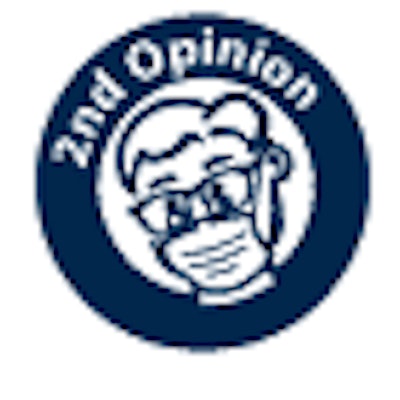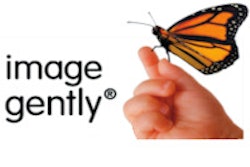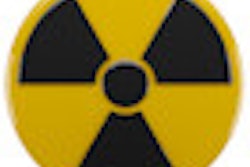
The November 23 New York Times article by Walt Bogdanich and Jo Craven McGinty is to be welcomed as it poses questions that are relevant to the safety of the most susceptible of our population, namely children being imaged using ionizing radiation for dental care.
It further asks timely questions on the validation of information delivered as part of lifelong learning provided to dentists in the form of continuing education required to maintain a license to practice.
From my perception leading the stakeholder specialty of oral and maxillofacial radiology, one of the most important goals is to develop image/patient selection criteria that are task- and age-dependent, similar to existing FDA/ADA guidelines for selecting dental imaging on the asymptomatic dental patient for dental caries, periodontal disease, and growth and development.
Cone-beam CT (CBCT) is a valuable tool so long as it is used and prescribed wisely -- that is, following professional selection based upon individual needs rather than as a routine without such judgment. Judgment is what makes dentists professionals. The FDA has designated x-radiation as a carcinogen; hence, there should always be benefits that outbalance the small but real propensity for harm.
As children are up to an order of magnitude more susceptible to untoward effects of radiation compared to mature adults, it is especially important to minimize dose to as low as reasonably achievable (ALARA). There is a new medical radiology campaign to "image gently" when it comes to children, and dentistry should follow this lead. Routine use of any radiographic imaging technique dispensing with individualized selection by the practitioner should never be considered a standard of care.
Commercially available cone-beam CT systems vary considerably when it comes to field-of-view (FOV), spatial resolution, collimation, basis images produced, and radiation dose. They should not be considered as one in the same. There are small-FOV systems running at high resolution that are equivalent in dose only to a very small number of periapical radiographs and that are valuable as adjuncts to endodontic, periodontic, and implant planning imaging -- tasks largely restricted to the treatment of adults. (The American Academy of Oral and Maxillofacial Radiology [AAOMR] and the American Association of Endodontists recently issued guidelines for this form of imaging in endodontics; these guidelines are open-source and will be updated every three to five years.)
On the other end of the spectrum are large-FOV systems that encompass much of the head and neck region, and have been used at multiple stages of treatment evaluation by certain orthodontists -- usually on children and adolescents.
The dose varies considerably within FDA-approved cone-beam CT systems, with some of the older systems rivaling medical multislice CT in dose and others being an order of magnitude lower. If medical CT was previously utilized in cases of severe asymmetry or craniofacial anomalies, then use of lower dose cone-beam CT could be warranted; however, there are probably a good number of orthodontic patients who do not require a sequence of large-FOV cone-beam CT scans, as the risk exceeds the benefits.
The AAOMR and American Association of Orthodontists are developing a joint position paper that will be based on the best evidence for safe and effective use of all diagnostic imaging used in orthodontics -- including, but not restricted to, cone-beam CT. When this is published, it will remain open-source and will be updated every three to five years.
For the issue of radiation safety in general, the matter includes the effective dose of various modalities -- 2D as well as 3D. The aim is to achieve a dose that is as low as reasonably achievable for any given image sequence. This can be facilitated by:
- Written selection criteria for image choice
- Use of the fastest acceptable receptors (for example, discontinuing D-speed intraoral film, given that E- and F-speed are shown to be diagnostically equivalent, with a dose savings of up to 60%)
- Physically collimating the beam to the region of interest and banning "electronic" collimation, where the field exposed exceeds that of the information collected
- Having dose measured or estimated and recorded for each exposure made, then placed in the patient's electronic health record, as well as populating appropriate DICOM image file tags
- Having those using ionizing radiation trained and certified for safe and effective use of the technology
- Reinforcing the principle that radiographic imaging should not be used as a mindless routine or merely for administrative purposes
In 2011 the AAOMR will be initiating a basic generic certification course in cone-beam CT usage that can be presented in various venues. The course will be vendor-neutral. It is anticipated that this course will be promoted for ADA Continuing Education Recognition Program (CERP) continuing education credit.
The AAOMR appreciates that there are many user and vendor stakeholders in cone-beam CT -- as well as the general public being an even more important third stakeholder group. The user stakeholders include general dentistry and most, if not all, dental specialties and allied groups. The one group specifically trained in all issues related to radiation and its use in dentistry is the specialty of oral and maxillofacial radiology represented by the American Academy of Oral and Maxillofacial Radiology. Its technical analog is represented by the American Association of Dental Maxillofacial Radiographic Technicians. The AAOMR has and does welcome input from appropriate disciplines with respect to clinical task-dependent, high-quality evidence supportive of image selection.
It can also be noted that CDT codes have an impact on procedures in dental diagnostic imaging. The AAOMR has two main initiatives this year. The first (as already mentioned) is to initiate basic certification training in cone-beam CT comparable to that recently suggested in the U.K. by the Health Protection Agency Working Party on dental cone-beam CT and already in place in Germany. The second is an overhaul of CDT codes related to dental radiographic imaging. Changes would include specification of cone-beam CT FOV and improving diagnostic yields from cone-beam CT by having a code for remote reads and overreads following the medical model for diagnostic imaging.
I would like to thank the journalists of the New York Times for their timely article, which draws attention to an important matter concerning child safety and the responsibility of the dental profession to ensure that this safety is made a high priority.
The AAOMR looks forward to working with the ADA and other interested parties to improve the radiation safety of the public and achieve optimal diagnostic image generation that balances the risks and benefits.
Allan Farman, B.D.S., M.B.A., Ph.D., D.Sc., is the current president of the American Academy of Oral and Maxillofacial Radiology and a professor of radiology and imaging science at the University of Louisville in Kentucky.
Copyright © 2010 DrBicuspid.com



















